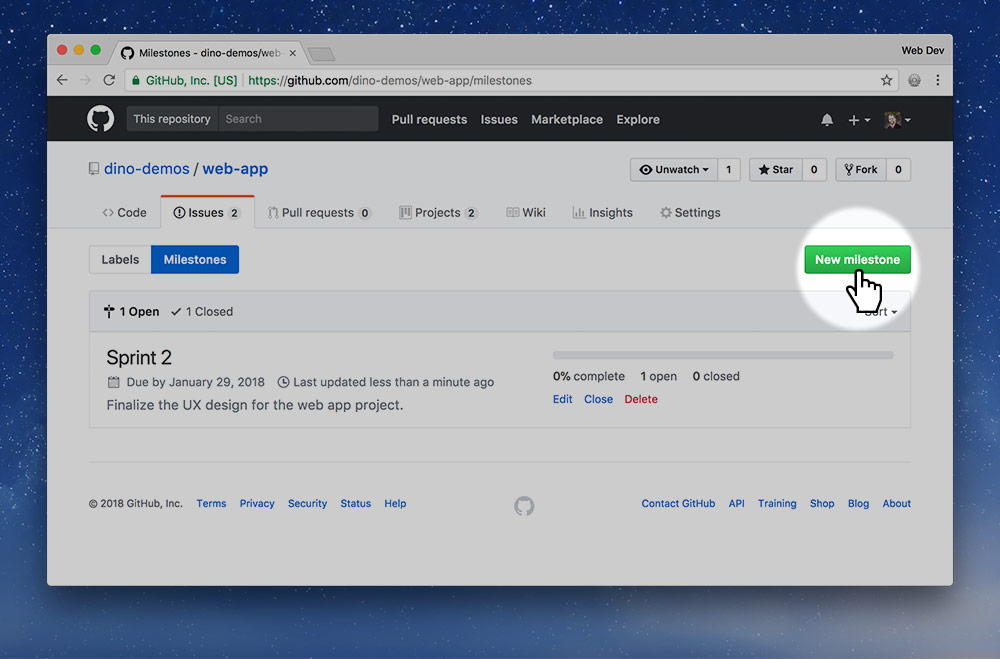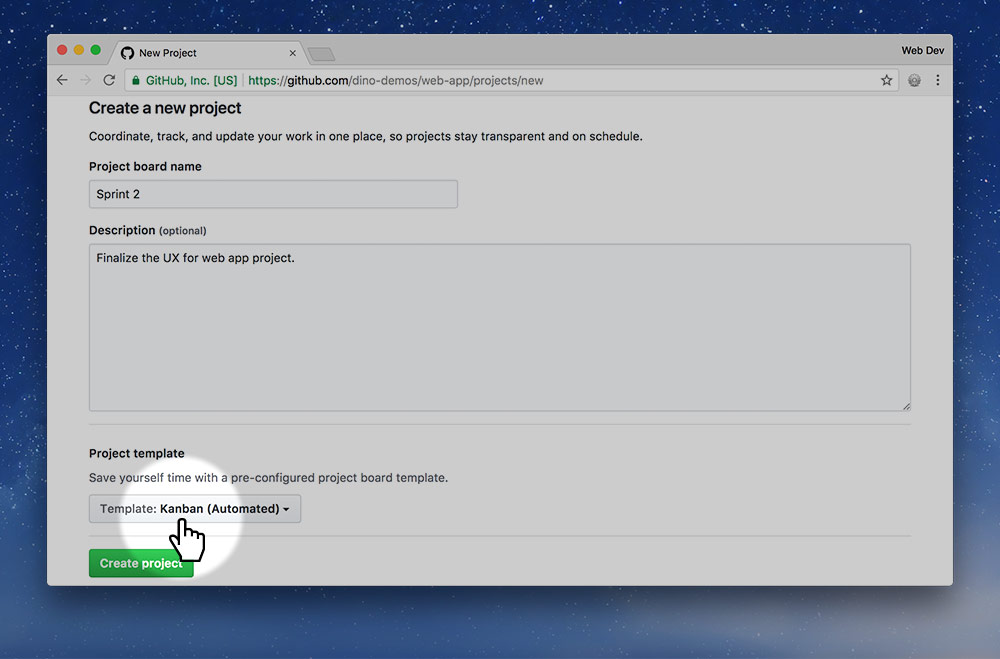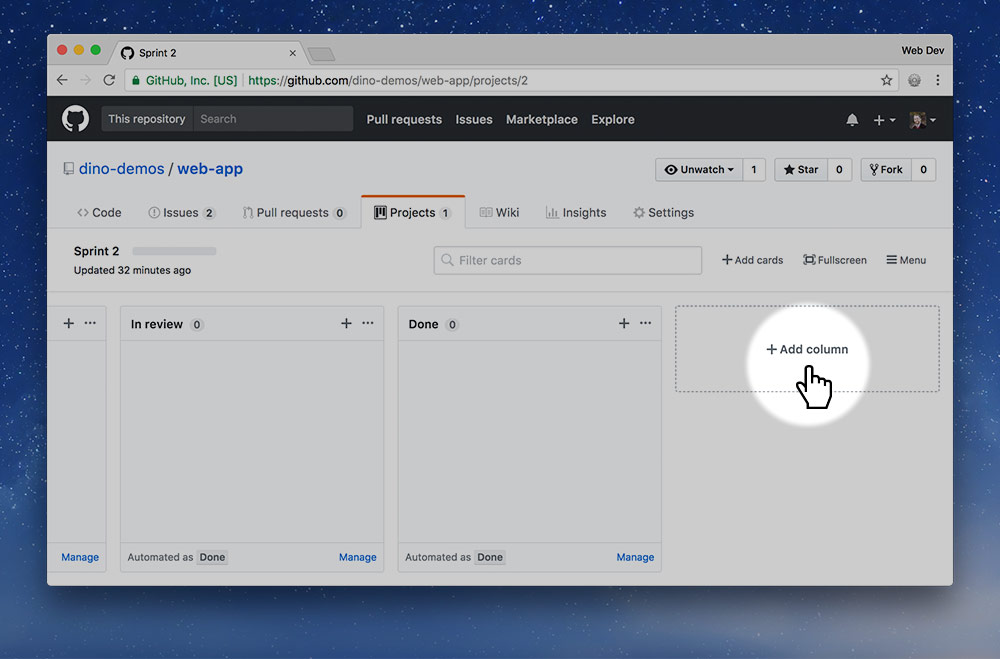Each week, at the beginning of class, you’re going to go through this process to define the work to be completed in the following week.
This follows an Agile-like software development approach where the requirements & tasks to be completed change over time.
We’re going to use GitHub exclusively for project management because the tools (Issues, Milestones & Projects) fit well in the Scrum & Kanban Agile practices.
Refer to the Sprint checklist for a shortened version ➔
Most weeks will actually start with a post-sprint review—but we won’t be doing that this week.











